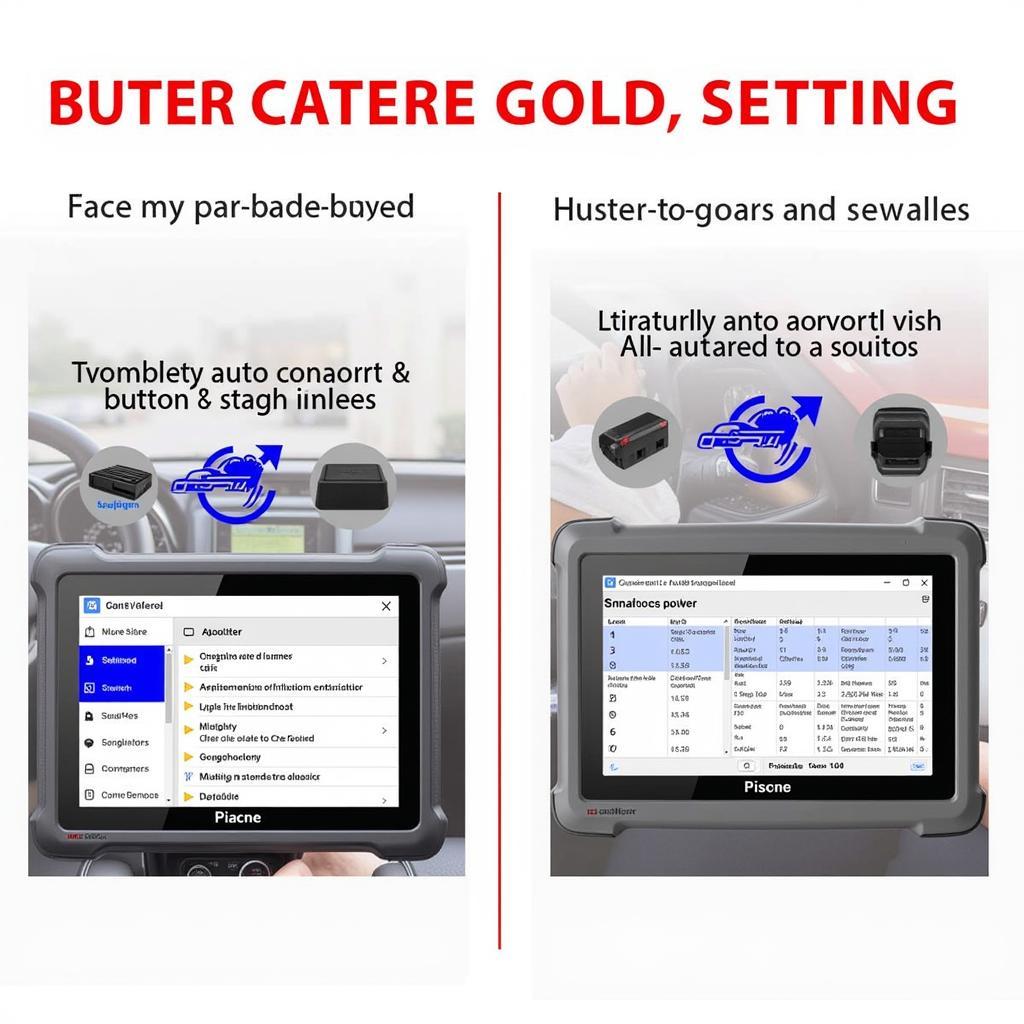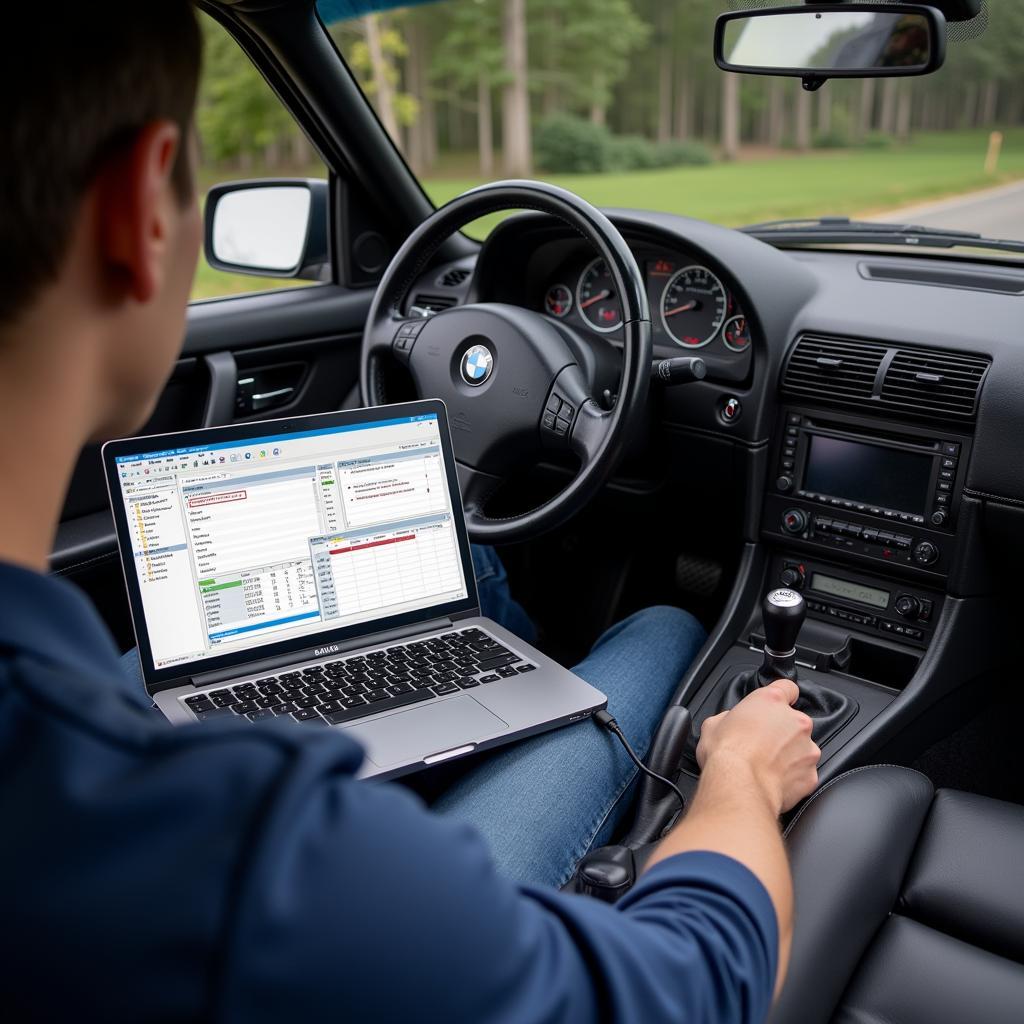Navigating the world of auto diagnostic tools can feel like trying to decipher a secret code. With countless options available, each promising to be the ultimate solution for your car troubles, how do you choose the right one? This guide will equip you with the knowledge to confidently Compare Auto Diagnostic Tools and make an informed decision that fits your needs and budget.
Understanding Your Needs: The First Step
Before diving into the technical jargon and feature lists, it’s crucial to define your specific requirements.
- What type of vehicle do you own? The make, model, and year of your car will influence the compatibility of diagnostic tools. Some tools specialize in specific manufacturers, while others offer broader coverage.
- What’s your skill level? Are you a seasoned mechanic or a car enthusiast looking to troubleshoot basic issues?
- What’s your budget? Auto diagnostic tools range from affordable handheld devices to professional-grade systems with hefty price tags.
 Basic Diagnostic Tool
Basic Diagnostic Tool
Types of Auto Diagnostic Tools: A Quick Overview
- Code Readers: These entry-level tools retrieve and display basic diagnostic trouble codes (DTCs). They are ideal for identifying the source of “Check Engine” lights and performing simple resets.
- OBD2 Scanners: Building upon code readers, OBD2 scanners offer more advanced features, including live data streaming, freeze frame data, and emissions readiness checks.
- Professional-Grade Scan Tools: These comprehensive systems provide access to all vehicle modules, allowing for in-depth diagnostics, programming, and coding. They often come with specialized software, extensive databases, and support for multiple vehicle manufacturers.
Key Features to Compare: Beyond the Basics
Once you’ve identified your needs and the general type of tool you’re looking for, it’s time to delve into the specifics.
- Vehicle Coverage: Ensure the tool supports your vehicle’s make, model, and year. Look for tools with regular software updates to stay current with newer vehicles.
- Diagnostic Capabilities: Consider the tool’s ability to read and clear codes, view live data streams, perform bi-directional controls (actuator tests), and access advanced functions like ABS bleeding, airbag system resets, and transmission relearns.
- User Interface: Opt for a tool with an intuitive interface, clear navigation, and easy-to-understand data presentation.
- Durability and Build Quality: Choose a robust tool that can withstand the rigors of a garage environment.
- Software and Updates: Regular software updates are crucial for maintaining compatibility with new vehicles and accessing the latest features. Some manufacturers offer free updates, while others require subscriptions.
 Comparing Diagnostic Tools
Comparing Diagnostic Tools
Budget Considerations: Finding the Right Balance
Auto diagnostic tools can range from under $50 to over $10,000. While it’s tempting to go for the cheapest option, investing in a tool with the features and capabilities you need will save you time, frustration, and potentially costly misdiagnoses in the long run.
- Entry-Level: For basic DIY troubleshooting, consider an affordable code reader or OBD2 scanner.
- Mid-Range: If you’re a car enthusiast or perform regular maintenance on multiple vehicles, a mid-range scanner with advanced features and broader vehicle coverage is a worthwhile investment.
- Professional: Mechanics and professional technicians require the comprehensive capabilities and support offered by professional-grade scan tools.
Expert Insight: What the Pros Say
“Investing in a quality diagnostic tool is like having an x-ray vision for your car,” says John Smith, a seasoned automotive technician with over 20 years of experience. “It allows you to pinpoint issues accurately, saving you time and money on unnecessary repairs.”
“Don’t underestimate the importance of user experience,” adds Smith. “A tool with a clear interface and intuitive software can make all the difference in efficiently diagnosing and resolving car problems.”
Conclusion
Choosing the right auto diagnostic tool is an important decision for any car owner or mechanic. By carefully considering your needs, comparing key features, and understanding the different types of tools available, you can make an informed investment that empowers you to tackle car repairs with confidence.
Need help choosing the perfect diagnostic tool? Contact ScanToolUS at +1 (641) 206-8880 or visit our office at 1615 S Laramie Ave, Cicero, IL 60804, USA. Our team of experts is ready to guide you towards the ideal solution for your automotive needs.

